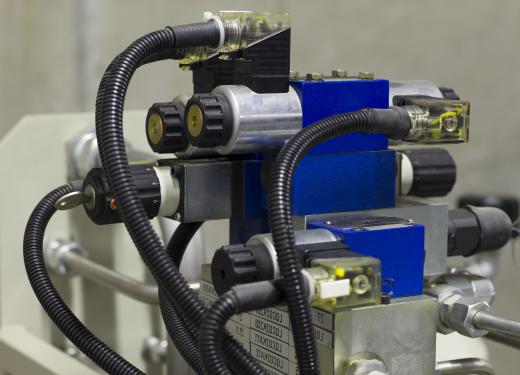A spring return actuator is a control device that supplies one-way powered motion with the impetus for its return stroke being supplied by a spring. For example, a spring return door actuator will only open the door under its own power with the door being closed again by a spring arrangement. The simple solenoid is a good example of a spring return actuator, with the solenoid plunger being returned to its neutral position by spring tension. The fact that the actuator only supplies a single-powered stroke simplifies the actuator control system with commensurate reductions in unit cost and maintenance requirements. The spring return actuator typically has a longer service life, further enhancing the cost savings on such systems.
Conventional bi-directional actuators supply powered actuation force for both their working and return strokes. This is typically achieved by reversing the direction of an electric motor or, in the case of hydraulic and pneumatic systems, pumping compressed oil or gas into the opposite side of the actuator cylinder. In contrast, a spring return actuator only utilizes a powered stroke on one-half of its working cycle. The impetus for the return stroke that resets the mechanism to its neutral position is supplied by a spring arrangement. One of the best examples of this concept is the linear solenoid that uses a spring to return its plunger once power is cut to the coil.

There are many types of spring return actuator mechanisms available for both linear and rotary output applications. In some cases, the return spring is an integral part of the actuator mechanism and, in others, a separate unit. The rate at which the return spring moves the secondary mechanism is often governed to produce a specific reset speed. In many cases, this governing function is achieved courtesy of a separate hydraulic damper typically fitted with an adjustable damping valve mechanism, allowing for fine-speed settings to be made.
The single powered stroke of a spring return actuator holds several benefits, including low installation costs, long service life, and reduced maintenance. The benefits can be attributed to the relative simplicity of the systems and the reduced number of control elements and duty cycles required for their operation. This means slightly lower initial costs and reduced running expenses. It also ensures superior longevity of the actuator and its power supply as only half of the normal duty cycles performed for each actuation.
